How to cook yucca root on the stove top! Yuca is a carb-o-licious versatile root vegetable used in all sorts of comfort food recipes worldwide. Let’s dive on in!
When I went to the Dominican Republic a few months ago, I was blown away by the cuisine. Aside from the wide range of saucy slow-cooked meats (my favorite!), there was an abundance of fresh salads and stewed vegetables.
I became hooked on cassava and couldn’t stop eating the stuff. I was determined to incorporate it into my own cooking as soon as I got home, but then something happened: I couldn’t find yucca root anywhere.
Fun Facts About Cassava, or Yuca:
Cassava is more commonly called, “yuca” in the U.S. The root is often misspelled “yucca,” which is actually a shrub-like plant. Indeed, yuca is the actual starchy root vegetable that you eat. I use both terms throughout the post for SEO purposes. Winky face. 😉
Yuca root is very dense and starchy and is used just like a potato in many delicious dishes worldwide. It has a mild flavor, which makes it versatile for incorporating into numerous types of recipes. Basically, it can go anywhere a potato can go…and then some!
When I first started my search for yuca, I had a difficult time locating it. Most grocery stores put it near the other less-commonly used root vegetables. The grocery store I shop at keeps them next to the turnips, rutabaga, kohlrabi, and ginger.
Origin of Yuca Root:
The root is native to Central and South America, and you’ll commonly see it incorporated in to a variety of dishes in Latin American countries, Africa, Southeast Asia, and the Caribbean Islands.
Most roots can be consumed raw, but yucca is one of the few roots that must be cooked, as the peel contains cyanide. Another fun fact: yuca is where tapioca pearls and tapioca flour come from!
Although the root is very tough to peel, once you break through the outer layer, it can be made into fries, added to soups, stewed on its own with butter, salt, and spices, or even pureed and made into custard-like desserts and cakes.
This versatile root is the third largest source for carbohydrate in the tropics. Full of Vitamin C, potassium, folate, and fiber, yucca doesn’t boast the same high-octane antioxidant properties as other roots such as beets, but still does its part in boosting your immune system and keeping your digestive system regular.
How to Make Yucca Root:
1. Chop off both ends of the yucca root using a sharp knife.
2. Using a sharp knife, carefully slice down the full length of the yucca root. Be sure to cut through both the brown peel and the thick white layer.
3. Start at the thicker end of the root (if one side is thicker) and work your thumbs under one side of the cut. Be sure to get underneath the first white layer, too as it will help you peel the skin off in large chunks. Once you’re underneath the peel, you can work your thumbs down the length of the root, peeling the skin off like a jacket.
4. Once the root is peeled, chop it into chunks.
[Alternative method: You can also use a vegetable peeler!]
5. Fill a medium-sized pot with water and bring it to a full boil. Place the hunks of peeled yucca root in the boiling water, and allow them to cook for 15 to 25 minutes, or until the root is very soft when poked with a fork. The root will turn from white to yellow once it has cooked.
6. Cut the yuca chunks in half length-wise and remove the hard spine from each piece.
Now you get to use the yuca however you would like! I’m partial to sea salt, butter, and sautéed garlic, myself! Maybe a sprinkle of cheese. 😉
Every once in a while, I come across a yuca that has out-stayed its welcome at the grocery store. It can be difficult to know whether the root is fresh or not, since it is hidden underneath such thick skin. Here’s how you can tell
How to Tell When Yuca is Bad:
When you peel the root, it should be completely white. If there are dark grey/black lines, specks, or brown areas, the root has gone bad. You can see what I mean in this photo:
Some oxidation is normal after you peel a yuca, but it shouldn’t be discolored as soon as you peel it.
Can I Cook Yuca Root in a Pressure Cooker?:
In a word, YES! Cooking cassava in an Instant Pot is super quick and easy. To do so, follow my tutorial on How to Cook Yucca in the Instant Pot.
Serving Options:
Serve with some sauteed garlic and butter, or try one of these recipes:
- Bibingka (Cassava Custard) from Saveur
- Coconut Cassava Bars from Blahnik Baker
- Paleo Egg Rolls from Predominantly Paleo
- Sancocho Stew from The Noshery
- Baked Yucca Fries with Grilled Banana Ketchup from Spoon Fork Bacon
- Crispy Baked Yuca Fries from The Healthy Maven
Yucca. Make it your new russet potato.

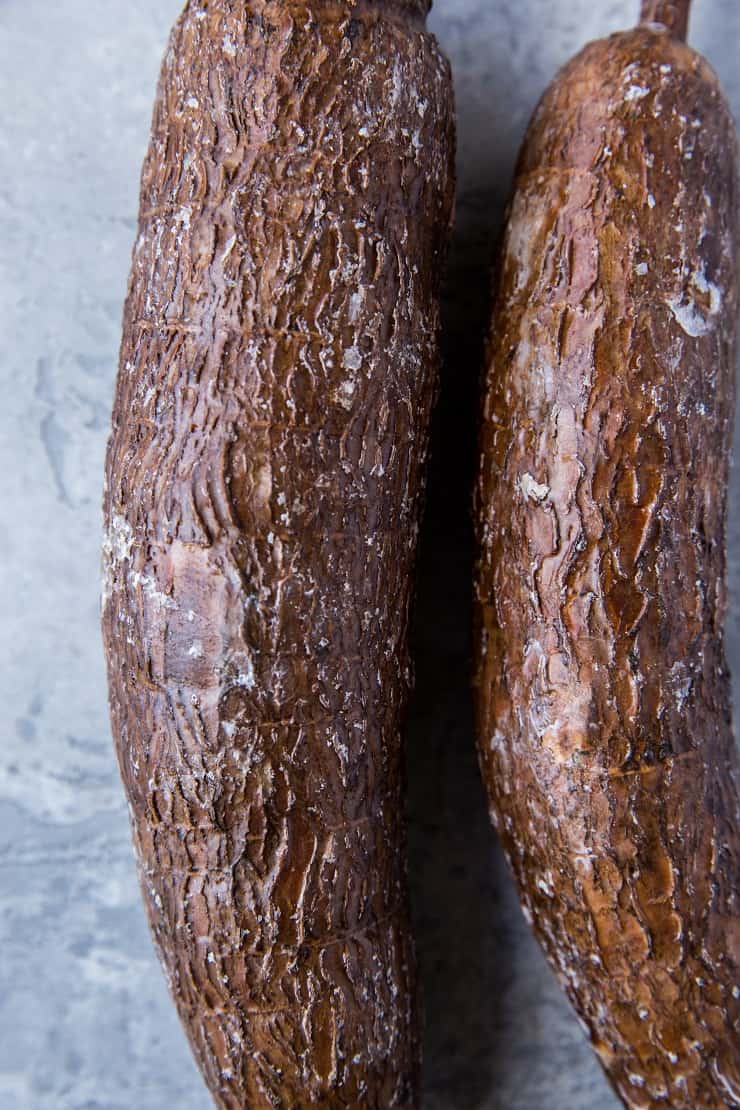

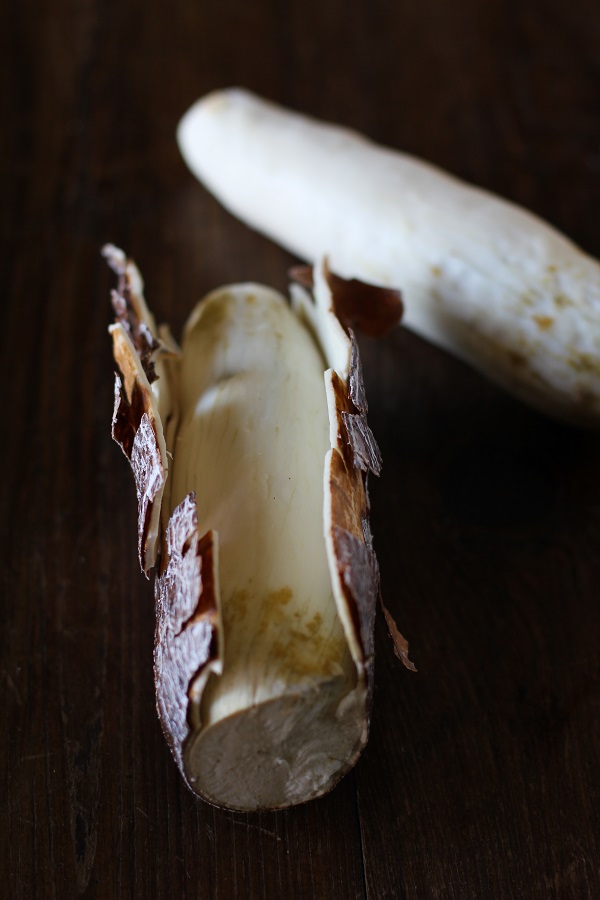


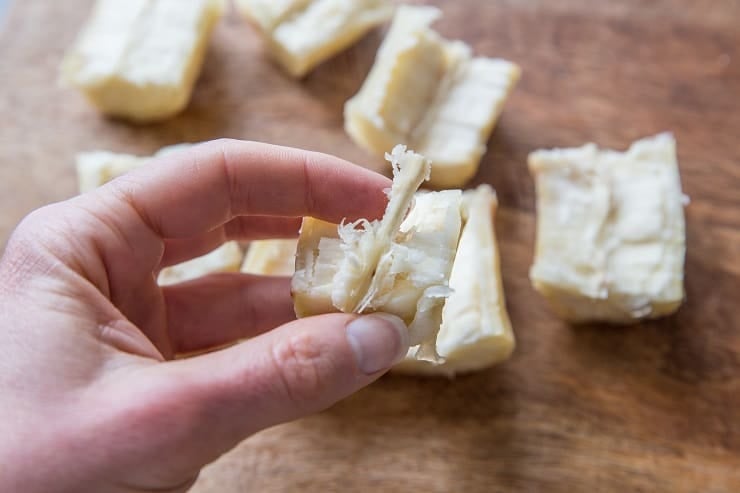
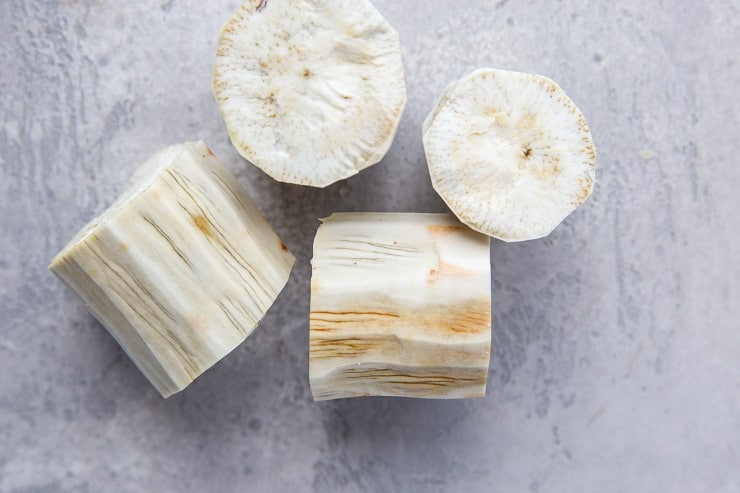
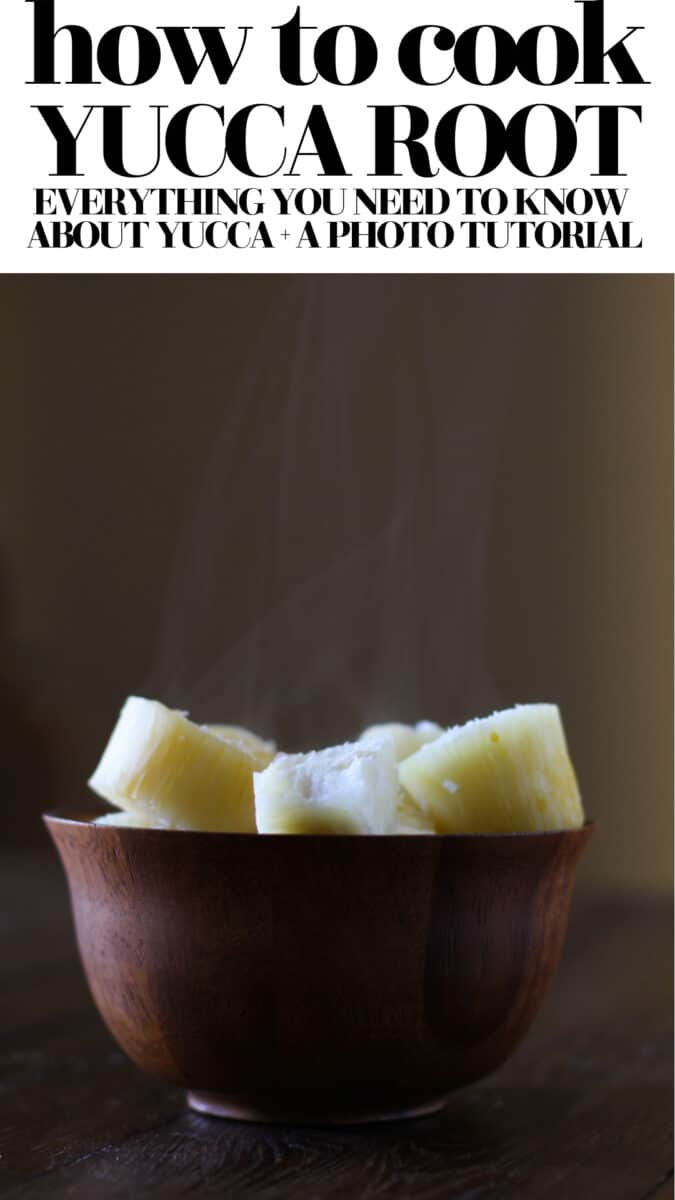

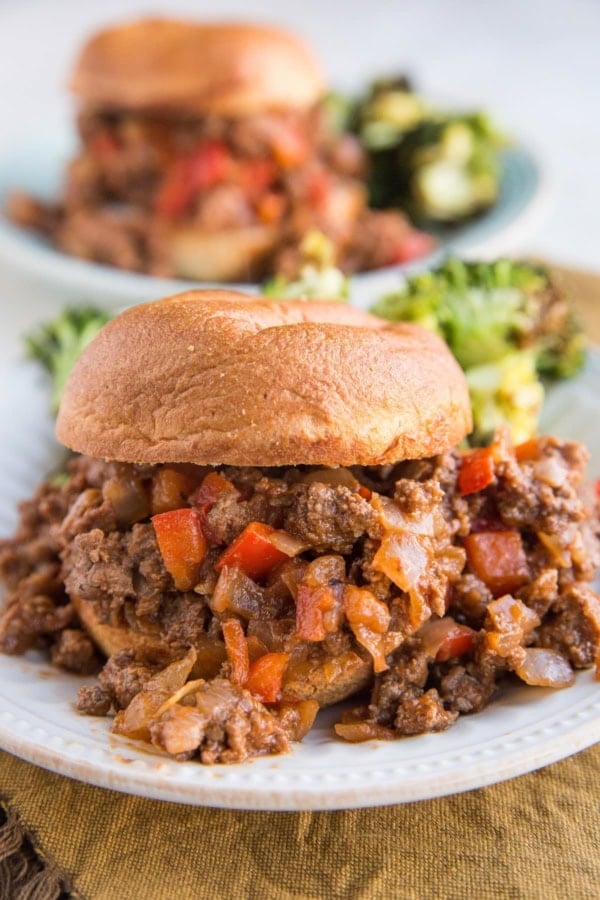
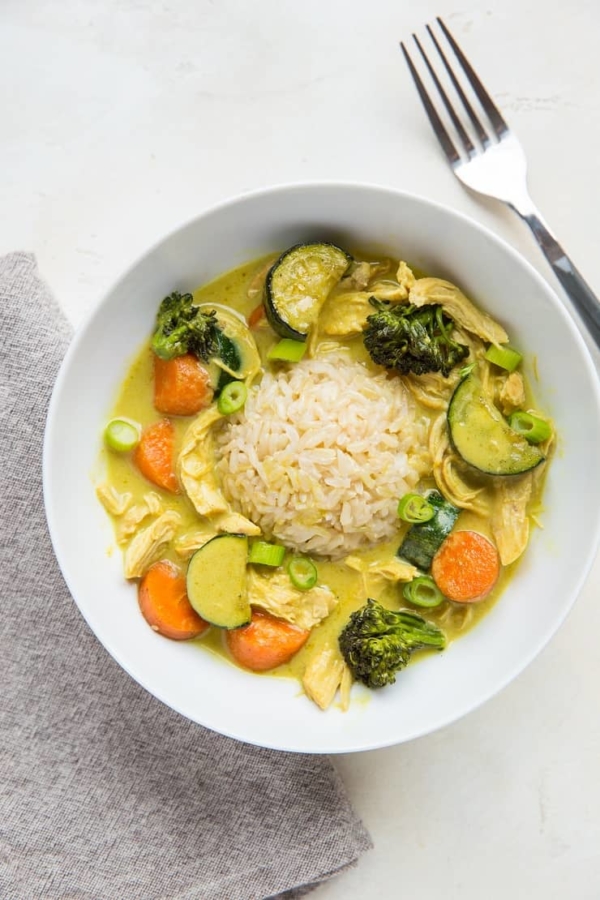
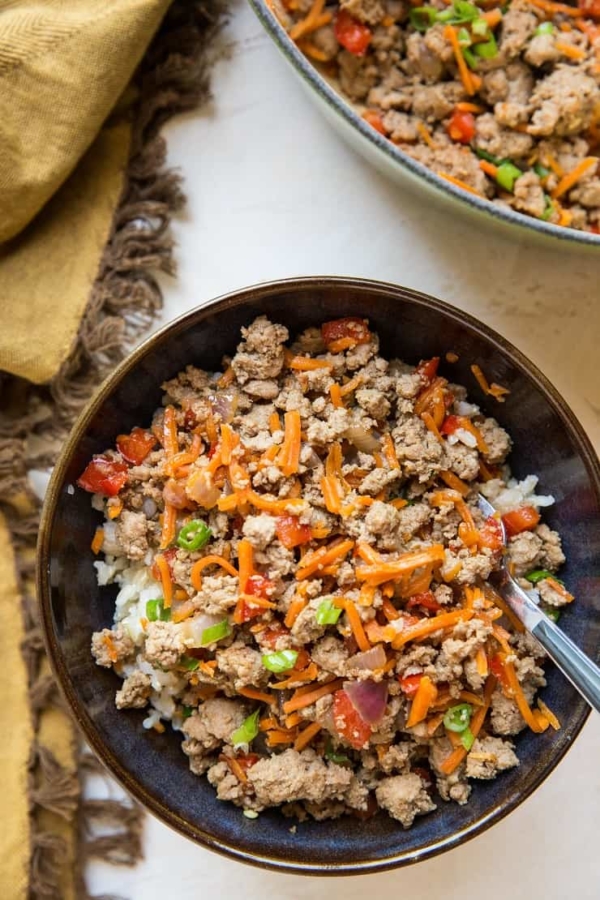












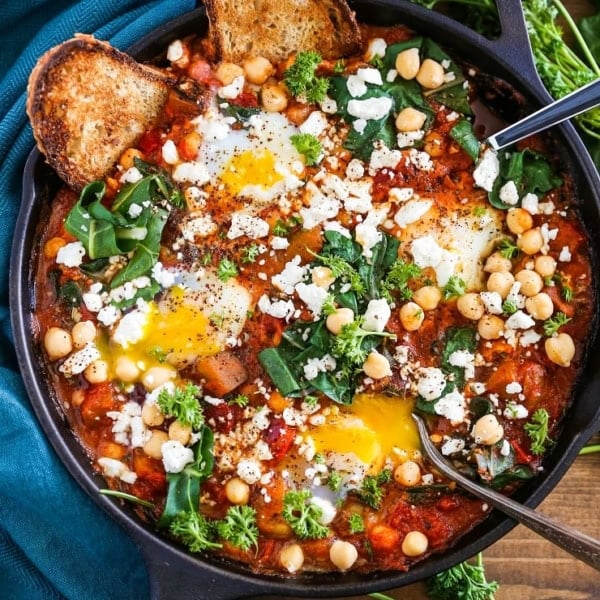


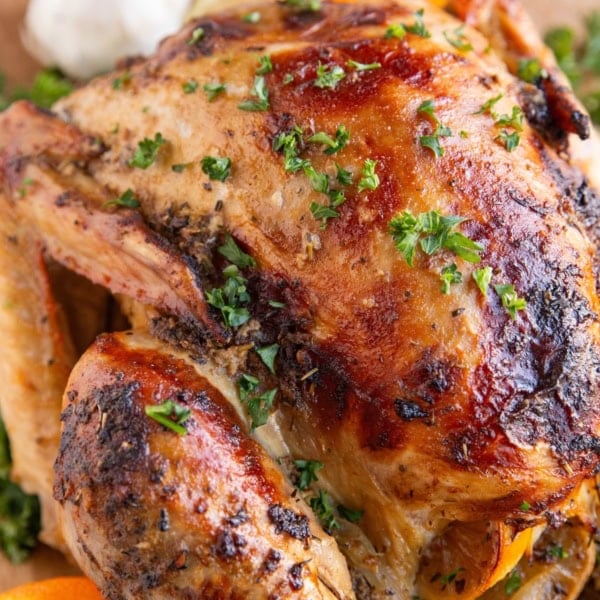
I like the peeling instructions! I always used a potato peeler and it didn’t work well. Yucca and Yuca are not the same. Yuca and cassava are the same. Tapioca comes from the cassava shrub. I have them growing along my back fence..shrubby trees that have a pretty cannopy and proliferate when they drop their fruit.
Yucca grows as a decorative plant too.. It looks more like agava. It’s the old fashioned spikey plant you see growing on either side of walkways and steps to old homes in the South that may or may not be there any longer. A marker of where homes were. They have these great spikes of white bell shaped flowers.
I am not sure what variety the Yucca in the grocery store is, and you can’t plant it because it is waxed. However there are many roots you can eat that are grown as ornamentals in yards around the US including the Day Lily!
I love Yucca, I discovered it while living in Miami, and with the help of some lovely sisters from Nicaragua working with me in business and home, I learned about preparing yucca, malanga, green mangos and green plantains! Yum!
Please help. I bought these frozen from my supermarket. After boiling for 2 hours, they had STILL not fully cooked – the outer parts were soft and transparent but in the centre it was still white and less soft. What is going on?
Hi James, I am Cuban American and yuca is a staple in our diet. My mother had told me that one of the old secrets to cooking a tender yuca is to “scare it”. I’lI’explain what this means below. Both natural or frozen yuca should be rinsed with water first. Then fill a large pot with lots of water and place the yuca inside (Add some salt and a little lime juice). Bring the water to a boil (I usually cover it to get the water boiling faster). Once it starts boiling, uncover the pot or if you can get away with it, keep the cover placed slightly over the pot so that it sort of covers it a little. Boil it for a total of about 45 minutes to 1 hour (you shouldn’t need more than 1 hour to cook yuca).
Now here’s the secret to having the yuca cook inside. After about 30 minutes of boiling, add about a cup of cold water to the pot (this is what “scaring the yuca” means) LOL. I’m not sure why, but something happens when you scare it that it allows it to be cooked thoroughly. It has something to do with lowering the temp and bringing it back to a boil. This should give you a fully cooked, creamy and tender yuca.
We normally make a Cuban “Mojo” sauce to pour over the yuca. It’s very simple – Cook some diced onion and garlic in a sauce pan w/olive oil and add juice from 3 limes & 1 orange (use fresh products only). Add a little dried oregano, salt and black pepper. You can alter the limes and oranges to your licking to make it less bitter if you prefer. Add this mojo over the yuca. It is very delicious. Hope this helps! 🙂
“Scare it” – that’s absolutely hysterical! Great advice though.
@Bonnie, Boo !!!
During my dietetic internship in 1973 I worked for a Dr. who specialized in “tropical Diabetes.” He had a suspicion that the cyanide in yuca was related to the high incidence of diabetes in the tropical belt around the globe. I never found out if he was able to prove a connection, BUT soaking the root is what many cultures do to get the cyanide out. This is similar to California natives soaking acorns to remove toxic compounds before grinding them for flour. Just thought the readers would be interested in this.
Interesting but that would mean there is a correlation between cyanide and Insulin production/blood sugar levels. Doesn’t cyanide cause sure death in short amounts of time post consumption ? Would be good to know more about the study because I’m thinking the preparation is peeling off the skin before boiling would omit cyanide from being ingested. If u havent guessed I’m from the tropics and love cassava.
The Spanish name for cassava is spelled YUCA (only one C) not yucca…yucca is another plant entirely.
In Barbados cassava was cooked until quite soft and served with lots of butter and lime juice to taste. Yummy.
I’m from Vietnam and just want to share that we love yucca root here, but are always careful about cooking it. Some yucca roots contain cyanide also in their meat so we always soak them in water for hours before cooking, or boil them a couple of times before eating. Better be on the safe side!
I loved peeling yucca roots as a kid :’)
Thanks so much for sharing, Phuong! Definitely best to be on the safe side. I’ve always peeled the yucca prior to cooking – if you soak it, can you leave the peel on and roast it? Thanks so much for your input!!
NOOOOO! Do NOT boil it with the peel on! You must REMOVE THE PEEL before soaking it or boiling it the way that Phuong explained.
I fell in love with yucca in college and whenever I spot it in the supermarket, I scoop it up! Love it smothered in a mojo sauce.
Great post! I’ll be looking for that next time I shop. Thanks for the “how-to”.
You got it, Elaine! Let me know when you try it – it’s such a marvelous root!
Awesome idea for a tutorial, because yucca is so intimidating! It’s been on my to-try list for a while. Thanks for the inspiration!
Aaaabsolutely! It wasn’t until I figured out how to peel the skin off like a winter coat that I began enjoying the process of preparing yucca…cause seriously, it was a task and a half when I sat there and picked off the peel little piece by piece!
One place I used to find yucca regularly was at a large Asian grocery. Where I live now, I would probably find it at a Mexican specialty shop. Thanks for publishing this tutorial – I haven’t cooked yucca in years, and now may have to do so again…
Great thinking! There are both Asian and Mexican stores in my area, so I’ll definitely be keeping my eye out for yucca there. Hope you enjoy! xo
Looks great! I’ve never tried yucca! Is the flavour like a mild sweet potato/ japanese sweet potato?
No, more like a dense white potato; not sweet at all.
Like a creamier fluffier potato with a slight natural savoury barely-there sweetness to it.
@Ray, the one im eating tonight tastes a bit fermented. Not bad thought but i think maybe i let it sit on my counter too long.
I love me some yucca! The only way I’ve ever cooked it was baked as fries so it’s interesting to see other recipes and methods.
Soon you’re going to have a complete guide to root veggies up in here!
I just saw yucca at my supermarket for the first time ever yesterday. I really wanted to buy some (because I pretty much always want to buy unfamiliar produce) but thought I should figure out what to do with it first. Done! Your post came at the perfect time. 🙂
Never figure out what to do with it first. Otherwise you never try it. Buy it first and then you must find a soution.
i want yucca fries as we speak (or type)…
I’m obsessed! I used to live in Costa Rica, and love yucca! I also love yuca, a totally different animal and popular as fries in Texas. I love anything full o’ carbs, clearly!
We just ate yucca at a Dominican restaurant in our neighborhood! I was nervous about it at first because I Googled it as we were sitting in our booth ‘contains cyanide’, EEK! BUT it ended up being so good!
Isn’t the cyanide thing crazy?? I’m certainly glad we can simply peel and cook the things because I love yucca root. How was it prepared at the Dominican restaurant? I’m looking for some prep ideas 😀
Peel the yucca boil it with little salt until get very soft then take it out drain it the put lots of olive oil to get hot then fry the yucca until golden brown then put paper towel for the excess of oil. Serve it with deep fry pork meat cut into small squares and cabbage salad cabbage salad with tomatoes cucumbers carrots and lime n salt
The outer layer is what contains the cyanide. I used to live in Panama, and that’s what the locals told me. So the white inside is good to eat, just not the tough outer peel . Most fruit seeds have cyanide, like apples and apricots. The Apricot pit has a seed in it like an almond, these have been proved by the Hunza to kill cancer, it is also known as Vitamin B-17.
Cooking does not remove the cyanide. The cyanide bearing chemicals are water soluble and cassava should be soaked or fermented, using small pieces, with rinsing and dumping of the soaking water being important.
Heat does not remove the danger.
Different varieties of cassava have different cyanide levels. Eating one root once as a whole roasted root will not mean the next root will be safe.
So the white flesh contains cyanide, too?
Cyanide has a low boiling point and the chemical degrades quickly when heat is applied even at just 90 degrees so boiling water will dissipate the majority of the poison . Though the rinsing and dumping does help and should be done
Pressure cook it for 15-20min and pull out and set on a plate and drip a lil olive oil salt and saute or slightly brown some garlic and sprinkle on top! Delicious!!!
Sounds amazing…thank you, Raul!! xoxo
@Leliu, Hey, Look up “Death Rides a Slow Bus In Hunza”
This is where I first learned about apricot seeds.
These people are super healthy, live to be 110 years old.
Nothing new- apple seeds have cyanide too!
And i eat apple seeds too and am still alive ?
But nobody in their right mind would eat apple seeds
You woud if you like that tart flavor. To each his/her own..l.
@Valerie,
@Roger, I think as long as apple seeds are just swallowed but not chewed, they’re ok. I used to have a parrot & I read never to give it apple seeds.